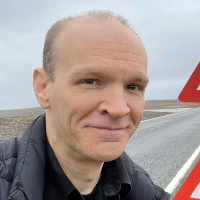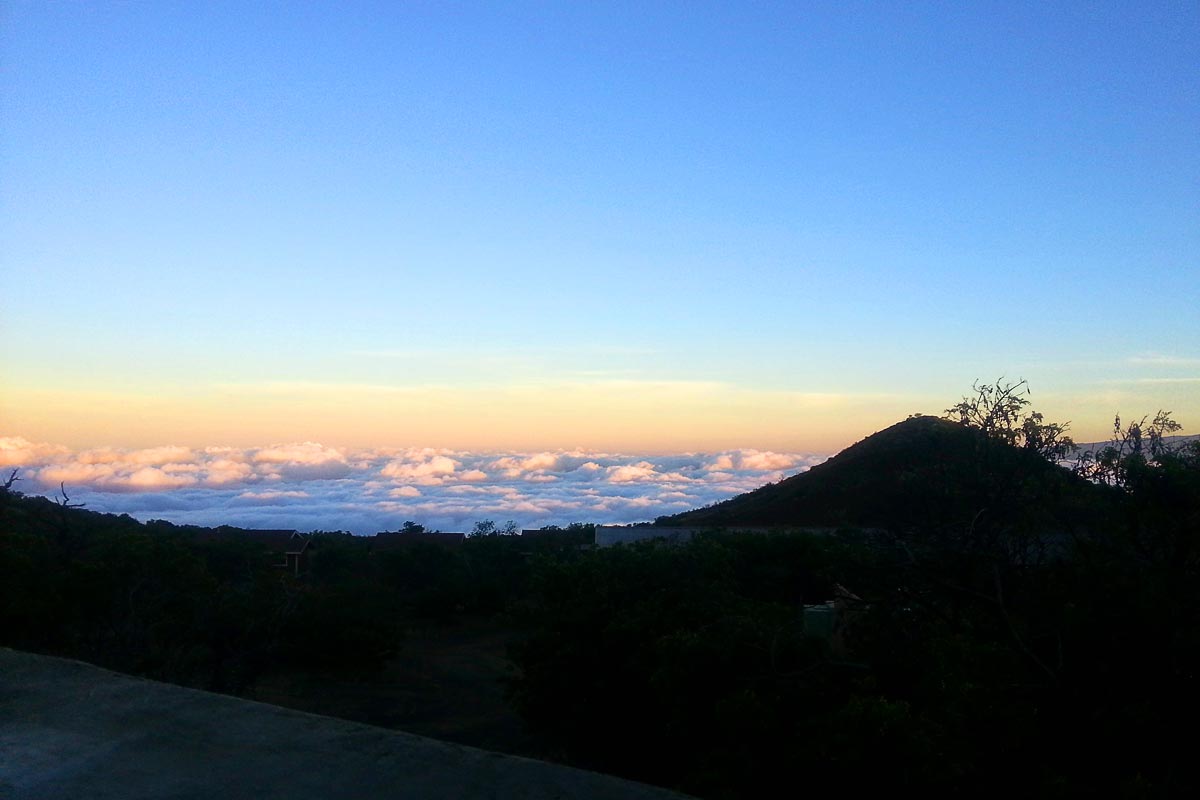
I've been looking for a lover but I haven't met her yet
She'll be nothing like I pictured her to be
—Neil Young
Have you ever heard someone say the internet is “making the world smaller”?
Well, it isn’t.
It’s just making information about the world easier to trade back and forth; you can indeed learn a lot staying home, researching and looking at photos and videos of faraway places. But you won’t really understand a destination until you physically go there yourself.
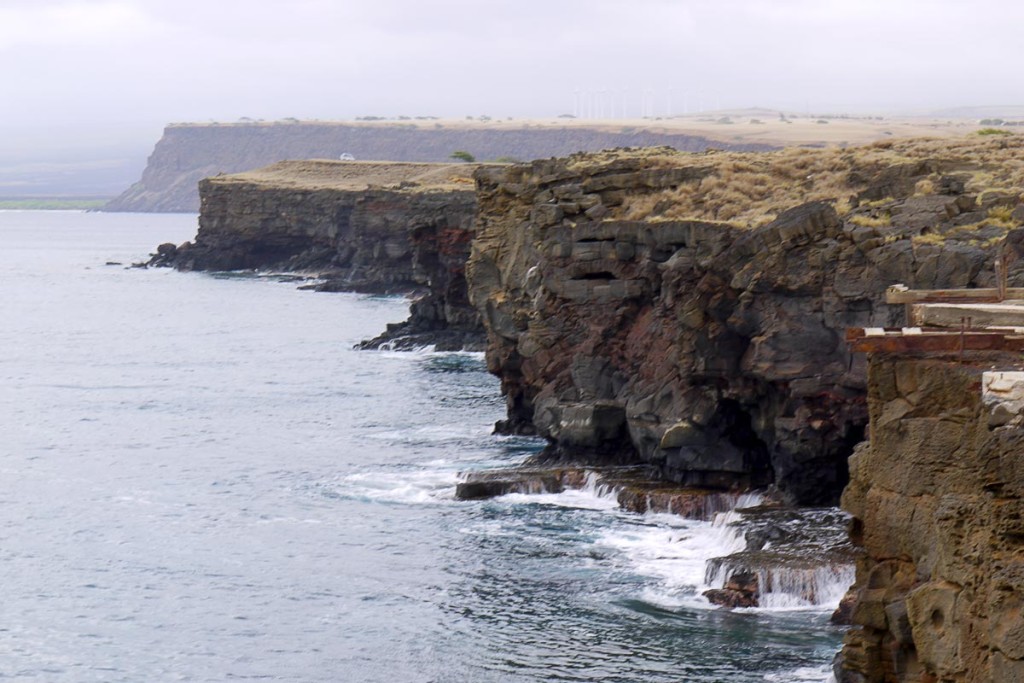
With that in mind, I spent five days on a quick trip to Hawaii Island (“the Big Island” as everyone calls it) in July 2014. With me were Masayo, my ever-present travel partner, and her dad, whom everyone calls Papa. They had arranged a nice place to stay, and we’d rent a car, with me (the only one licensed to drive in the U.S.) as the full-time driver.
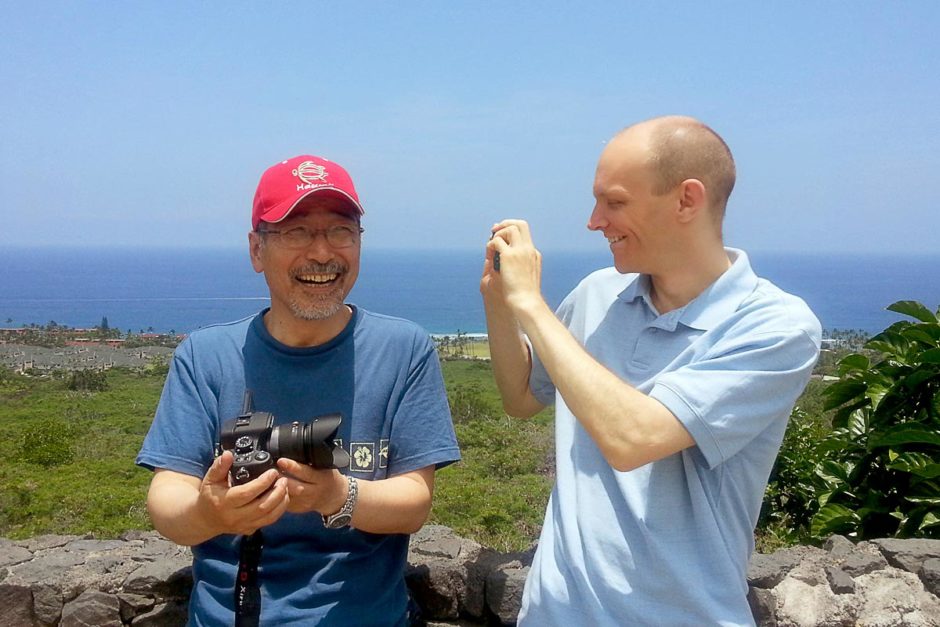
Papa and I.
The flight from Osaka, Japan landed in Honolulu and we took another to Kona Airport on the Big Island. We picked up the car, and for the first time in over two years, after a long flight across five time zones, I got behind the wheel. After reminding myself which was the gas and which was the brake, we took off down the road.
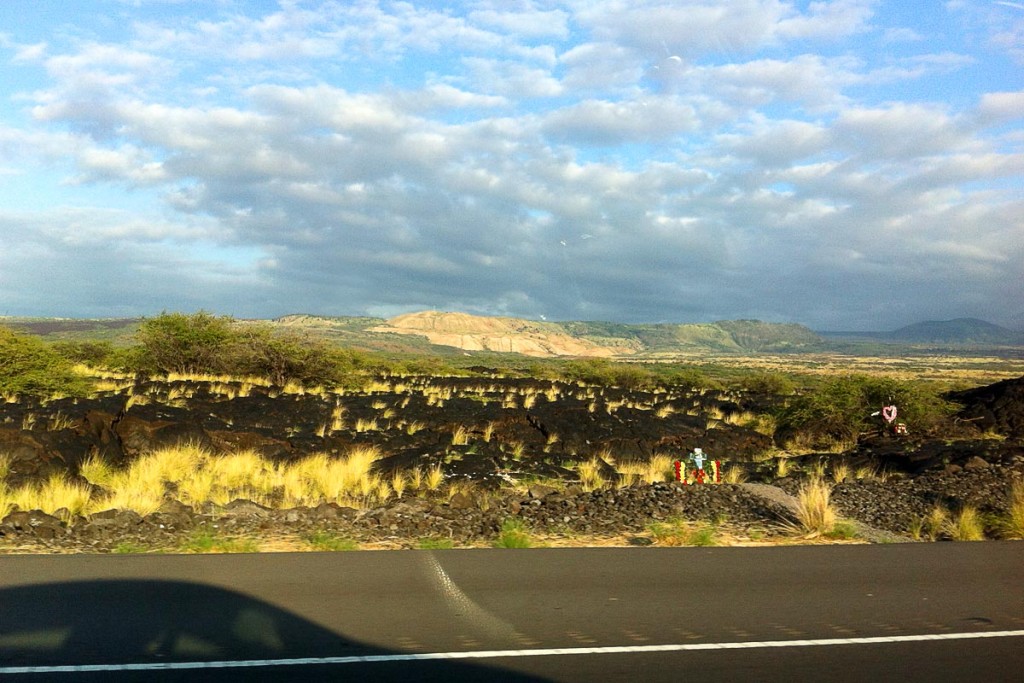
The first thing we saw was not beautiful white beaches and people in bikinis windsurfing, it was scrub brush and dark rocky terrain. On our little two-lane highway up the coast, the left side was deep blue ocean and the right was this Venusian landscape stretching up to a mountain. It was immediately different than I expected.
It turns out that the Big Island isn’t the Hawaii of travel posters, necessarily. It isn’t know for its beaches and sun culture; it’s mountainous, craggy, and rough. I liked it immediately.
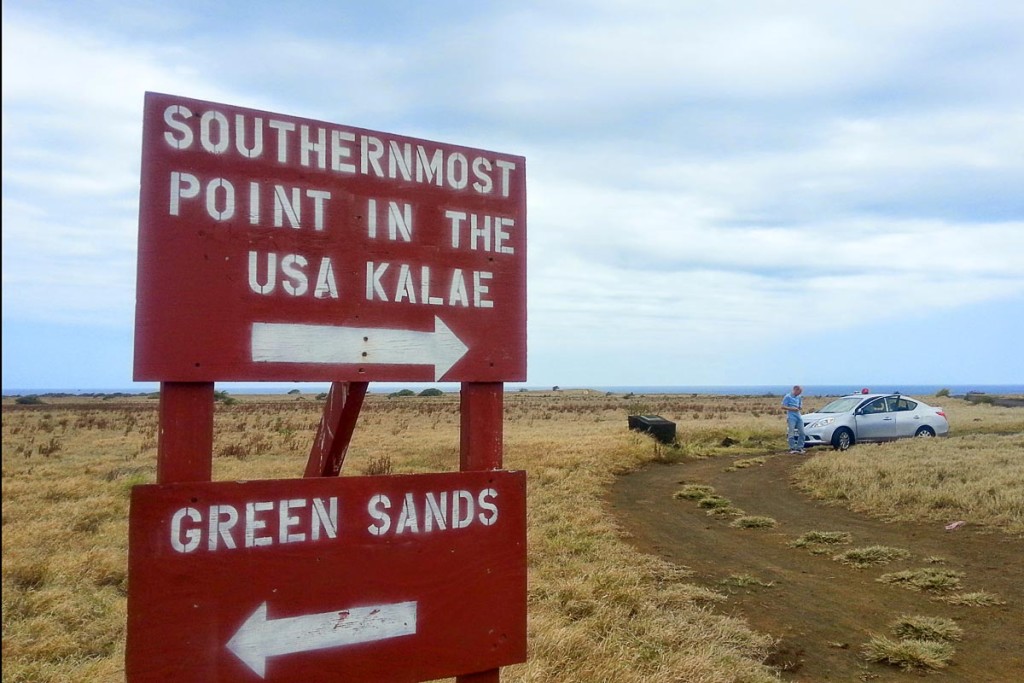
Kalae: The Southernmost Point in the USA
Did you know that Hawaii has the United States’ southernmost piece of land? I sure didn’t.
But as we drove around the next day, there was the sign: America’s South Point is the bottom tip of Hawaii Island. A glance at a map confirms it.
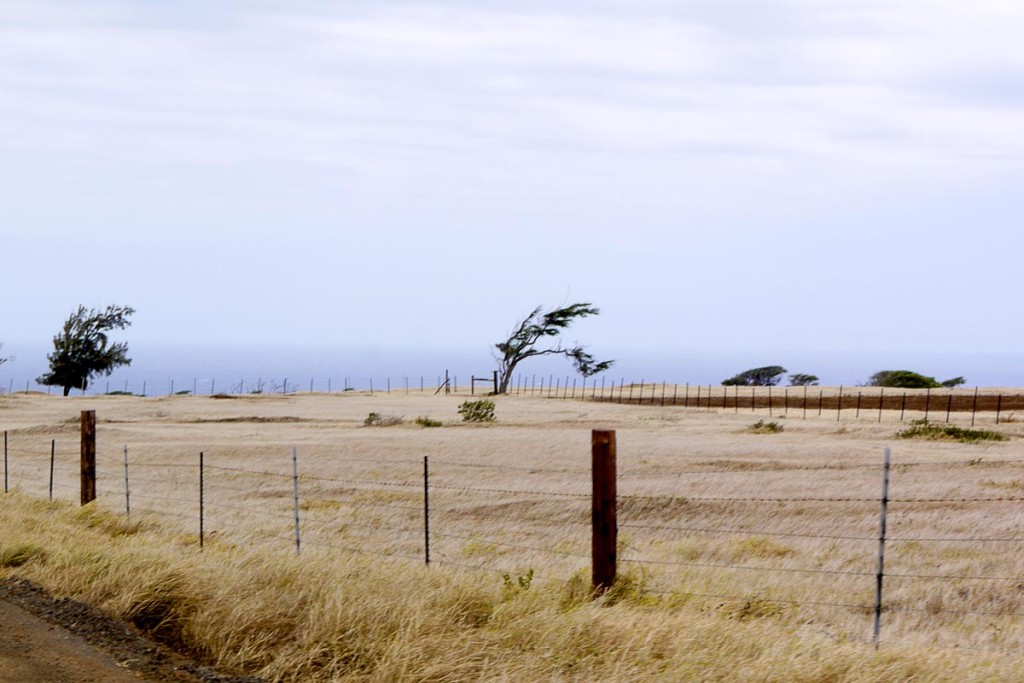
We pulled off onto an even smaller road, the three of us all alone, and headed through a very wind-swept area of fields and farms where the trees have been permanently bent by the wind. (But they hang on!)
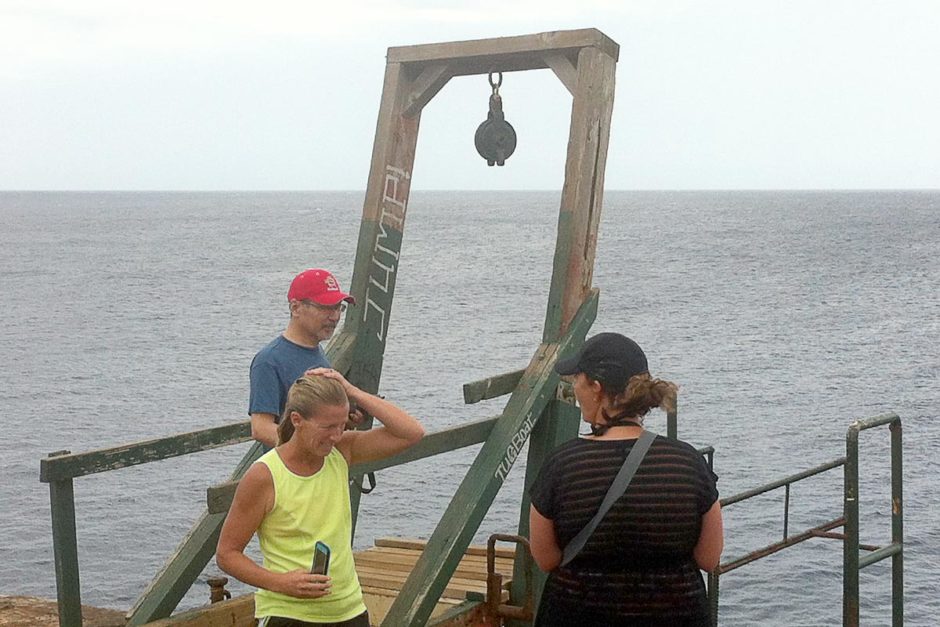
The south point, called Kalae, is actually a cliff that rises sturdily out of the water. A platform has been erected for people to jump off of. Some other tourists were there, an ex-diving coach and her teenage sons, jumping from the platform. We didn’t do it ourselves.
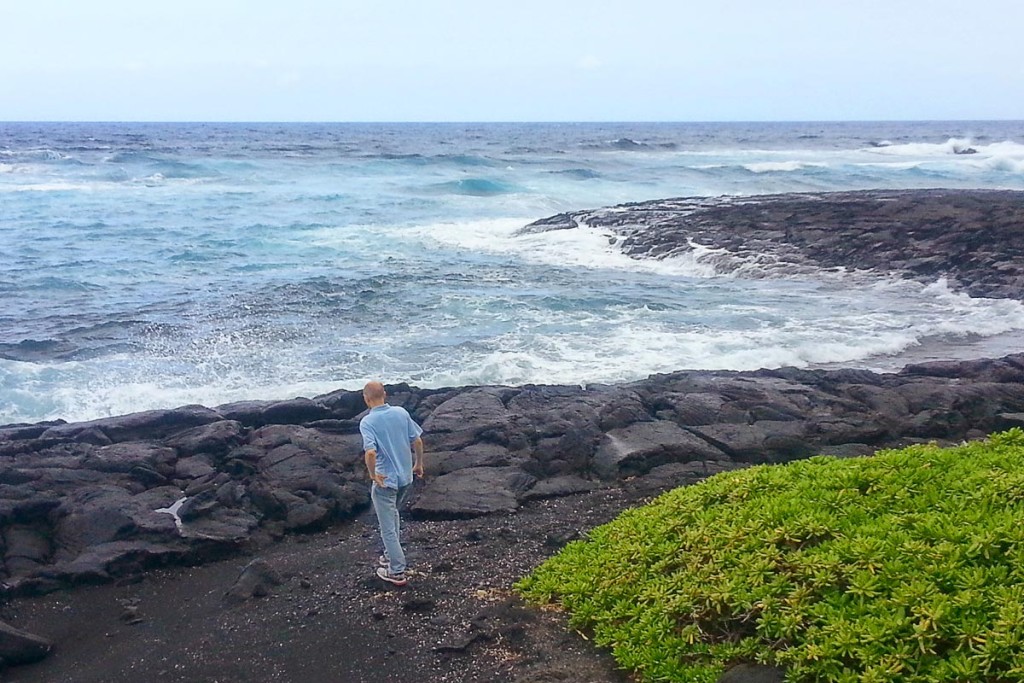
About regret
I’ve since regretted the decision not to jump. I went to all the trouble to make it to this notable and far-flung place, where there is a cliff you can dive off of, and I didn’t do it?! Who cares if my jeans would have gotten all wet, or if I had to jump in my boxer shorts! It would have been totally worth it. Note to self: don’t waste opportunities like this.
I guess I’ll just have to go back sometime and rectify this.
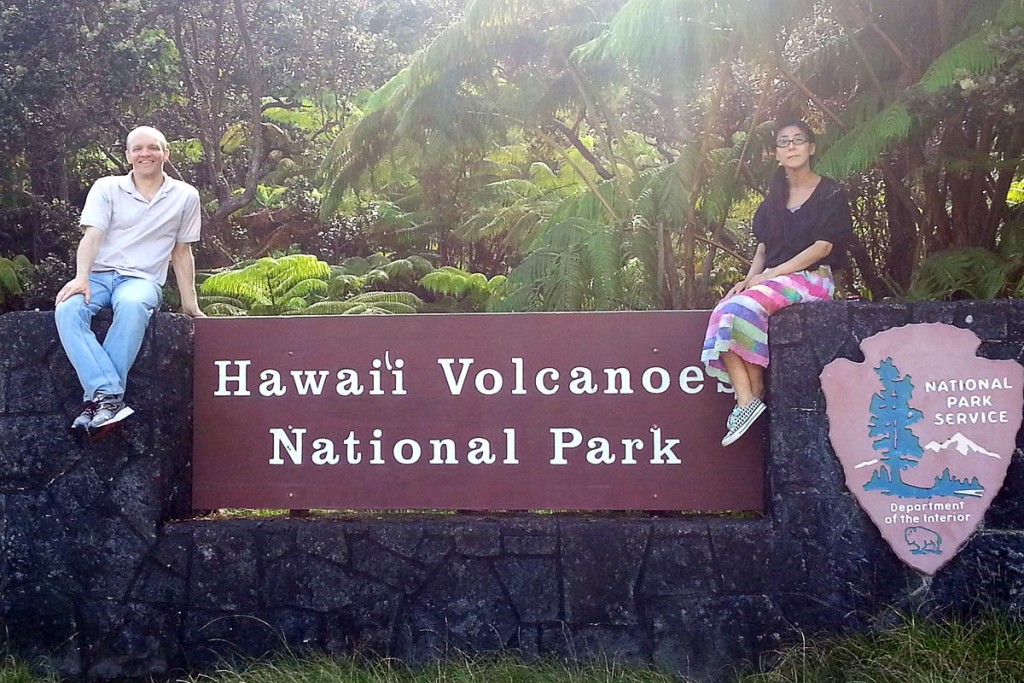
Punaluʻu Beach
We continued on to Punaluʻu Beach, with its volcanic black sand. This would be the only beach we saw on the trip, and it was not like the photos of Hawaii you usually see. As ever, the reality is more interesting than the travel posters: a black-sand beach, with giant waves splashing high into the air against the huge rocks that you can walk right out on, and a dark, threatening sky creeping out from the tree tops. Who needs a jet ski!
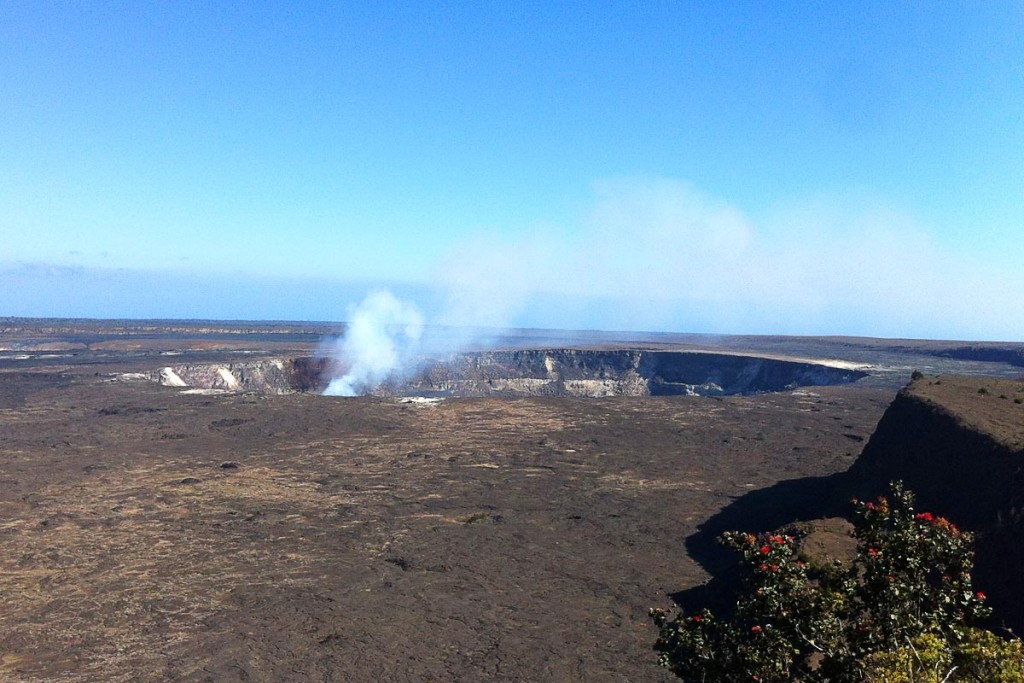
Hawaiʻi Volcanoes National Park
Further inland, we passed through the magic Hawaiʻi Volcanoes National Park, home to the remnants of lava flows both recent and ancient, as well as still-smoking craters such as the famous Kilauea. (We weren’t able to see the actual red glowing magma, since it’s an expensive helicopter tour you have to sign up for and it wasn’t in our schedule.)
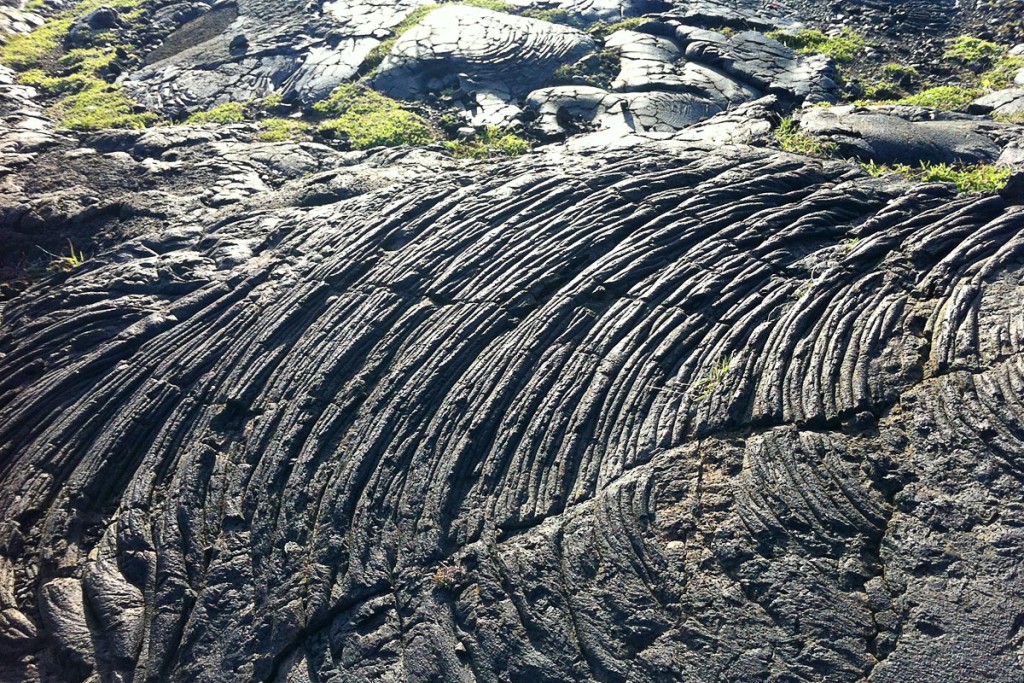
But we did have a car, so we drove along Chain of Craters Road, a 19-mile two-lane highway that must rank as one the world’s top scenic routes. It passes craters and desolation, at the highest point winding through the strangest land I’ve ever driven in: vast black lava fields, with the sun bouncing off the surface and a great, fierce wind pounding through. We got out to walk around a bit, and the wind was noisy enough to make conversation (and standing upright) difficult.
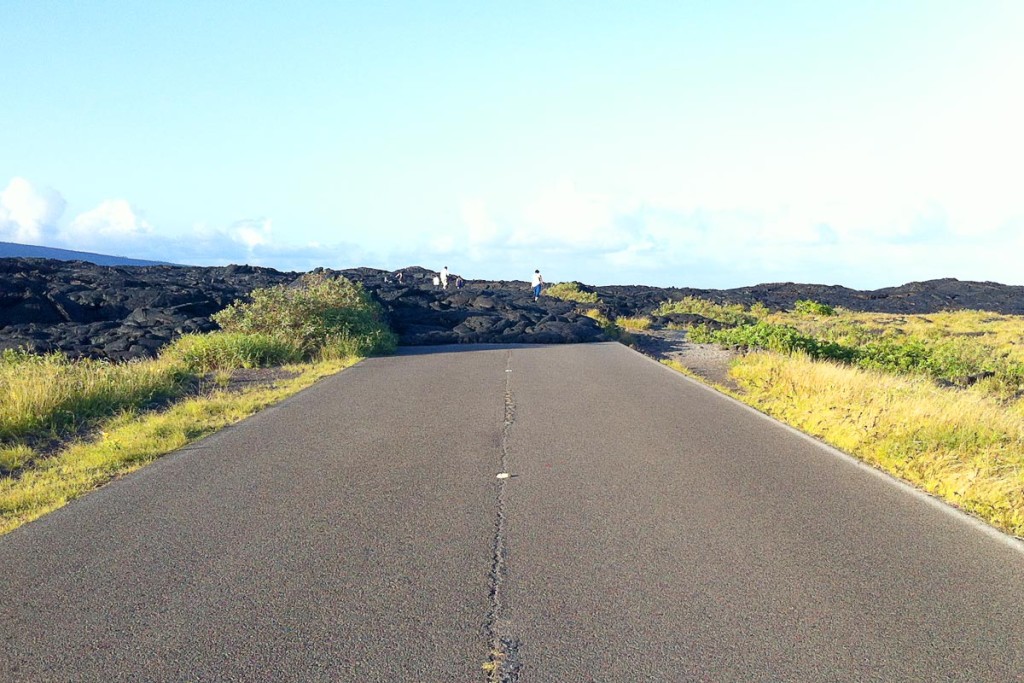
Volcano vs. road construction. It’s obvious who the winner is.
Chain of Craters Road used to cut through back to the main road but has been blocked by Kilauea’s various lava flows. Now, the road just ends, covered by thick masses of dried lava, which tourists now climb about. At this point, the deep blue sea is nearby, over some dramatic cliffs with some great pounding, splashing waves again. As we scampered over the lava and took photos of the great ocean, I thought Wow, how Hawaiian can you get!?
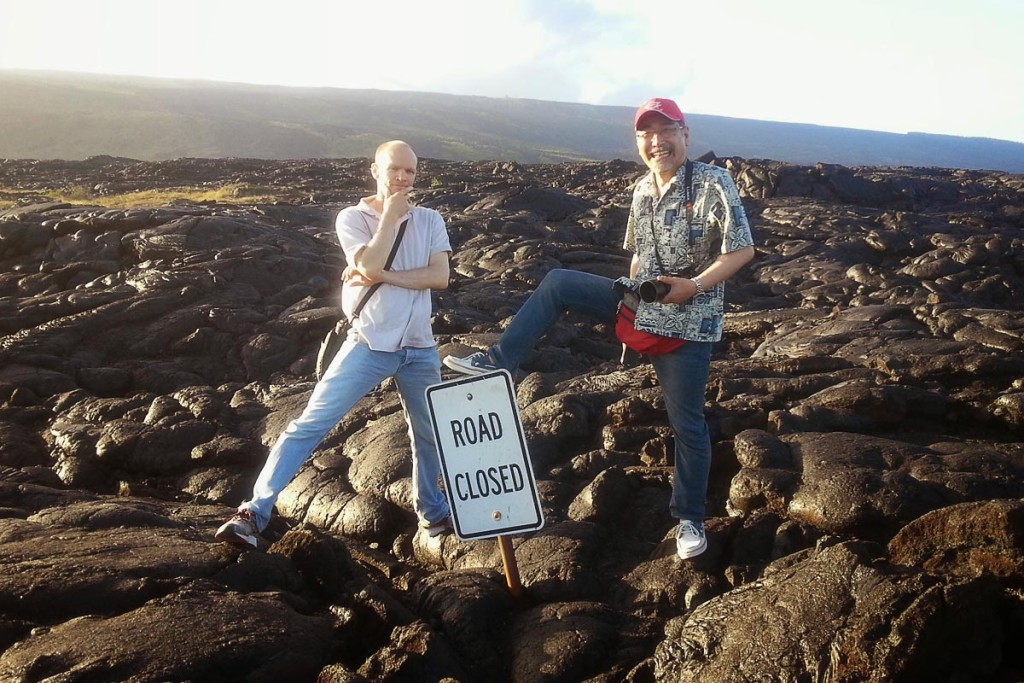
ʻAkaka Falls
We saw a turnoff one day for ʻAkaka Falls State Park, and decided to check it out. A walking path leads from the parking lot through the dense jungle to the falls, which are thin and high, and viewed across a valley from a platform.
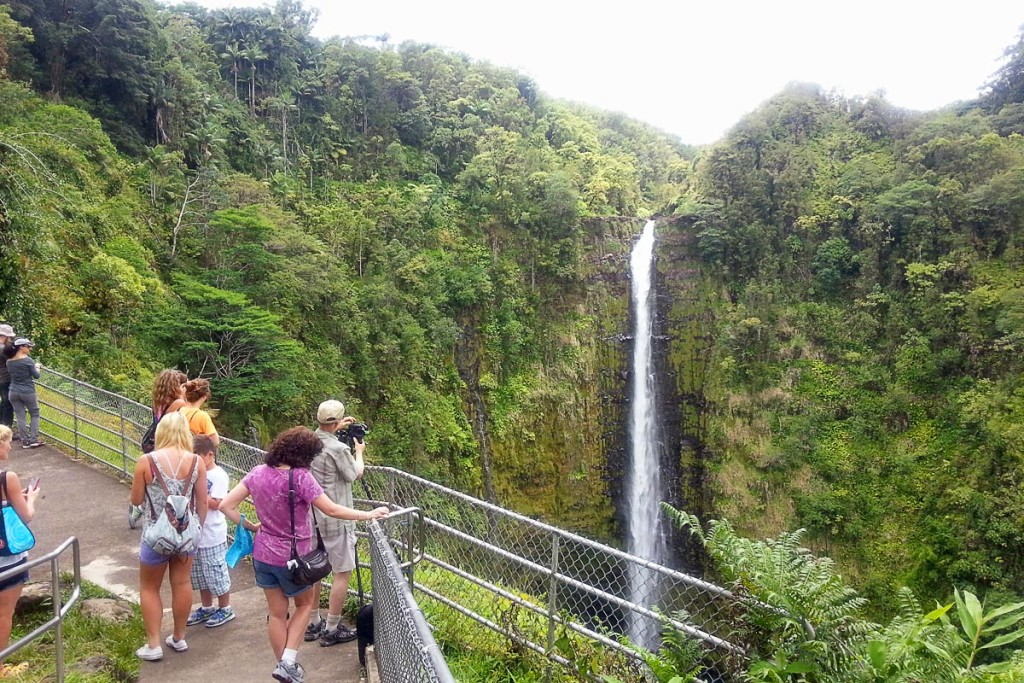
This was a real taste of primal jungle; the Big Island has no large towns at all, and is mostly very quiet. ʻAkaka Falls is that, times 1000: in another way, it was as harsh and distant a terrain as the high, exposed lava fields.
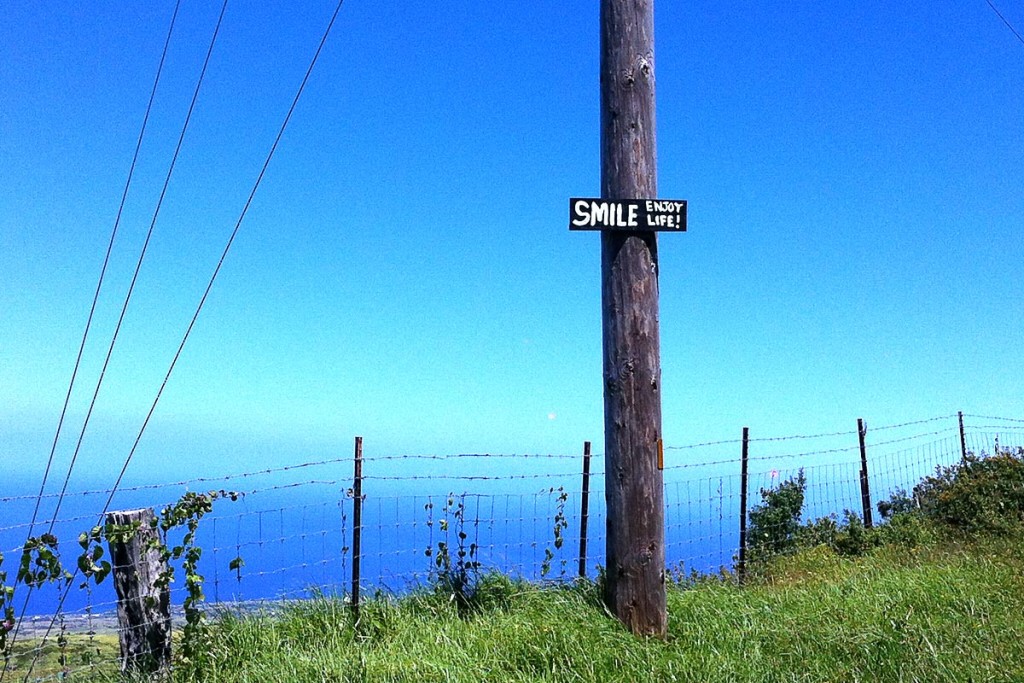
Waipio Valley
One morning we signed up for horseback riding in Waipio Valley in the north part of the island. The valley is rather inaccessible, but has a few residents — some even have running water and electricity. Tucked behind some mountains, with valleys and streams and trees, Waipio really is a kind of paradise.
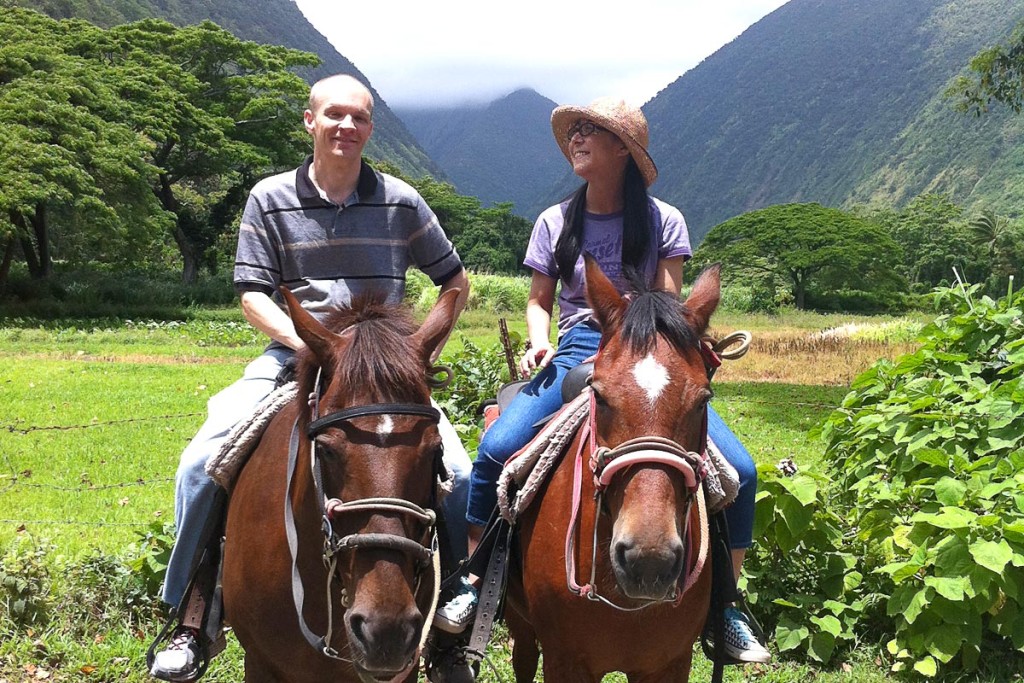
We descended in the truck owned by our guide, Micah, who lives in the valley. The road down is said by some to be the steepest paved road in the world; Micah explained how ones brakes and gears must be in top-notch shape. It was harrowing, but the views were great.
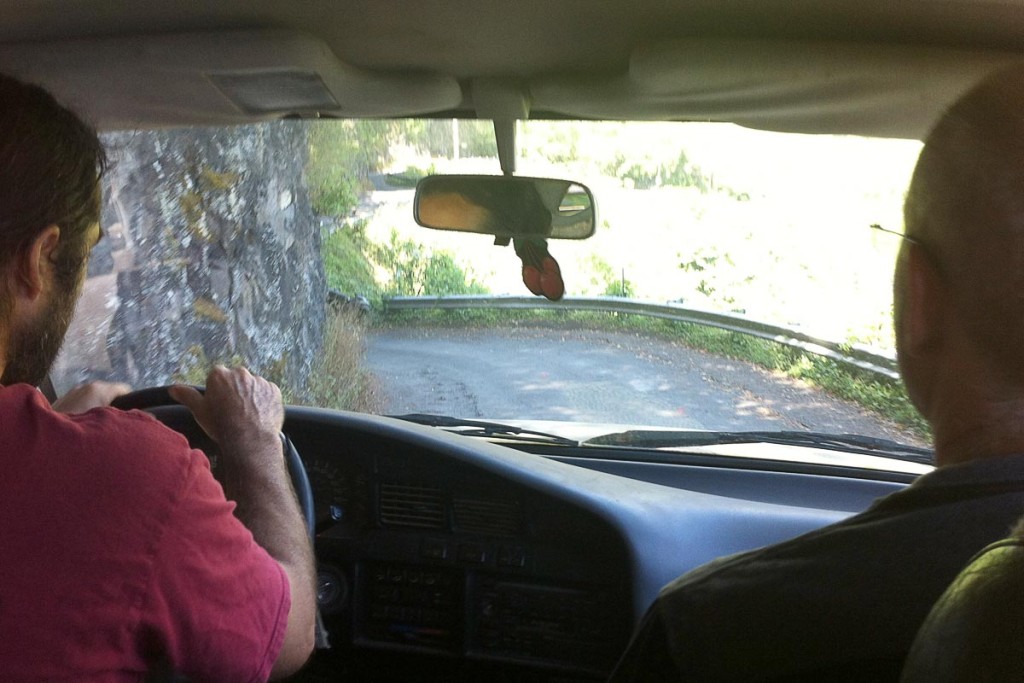
The three of us, plus another couple, mounted our respective rides and listened to a brief speech on how to handle the usually-gentle but unpredictable beasts. We were then led in a ragtag line across quiet brooks and under bright green trees, watching the mist resting on the distant mountain slopes.
Diabetes report – Carrying supplies in Hawaii
Since most of this trip was in a car, it was easy to carry around my insulin pens (Humalog and Lantus) and blood sugar testing supplies. I never left them sitting in the car in the sun though; they always came with me in my little shoulder bag, which stayed relatively cool in the Hawaiian breeze.
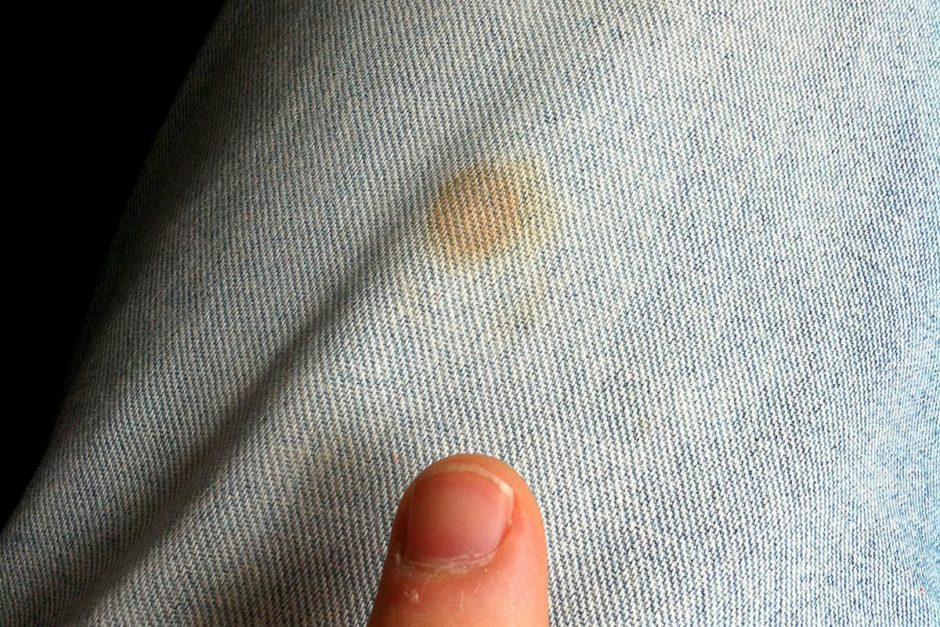
I did learn that I shouldn’t take insulin shots into my legs through my pants. If you’ll notice the pictures on this page, in Hawaii I was wearing light denim jeans. It’s much easier at restaurants to just do a discreet injection at the table, but one of them was a bleeder and I ruined my nice jeans.
After that, I always went to the bathroom to do it, and every place seemed to have a bathroom of some description I could use.
The only time I was apart from my supplies was on the horseback ride in Waipio Valley – I left my bag in the (shaded) car and put my insulin pen in my pocket. I checked my blood sugar before the horse and I sauntered off and knew that I’d be okay for the short ride. It made me nervous to be apart from low blood sugar snack, even for a short time, but I took the calculated risk and figured it would be ok.
Fortunately, I was right.
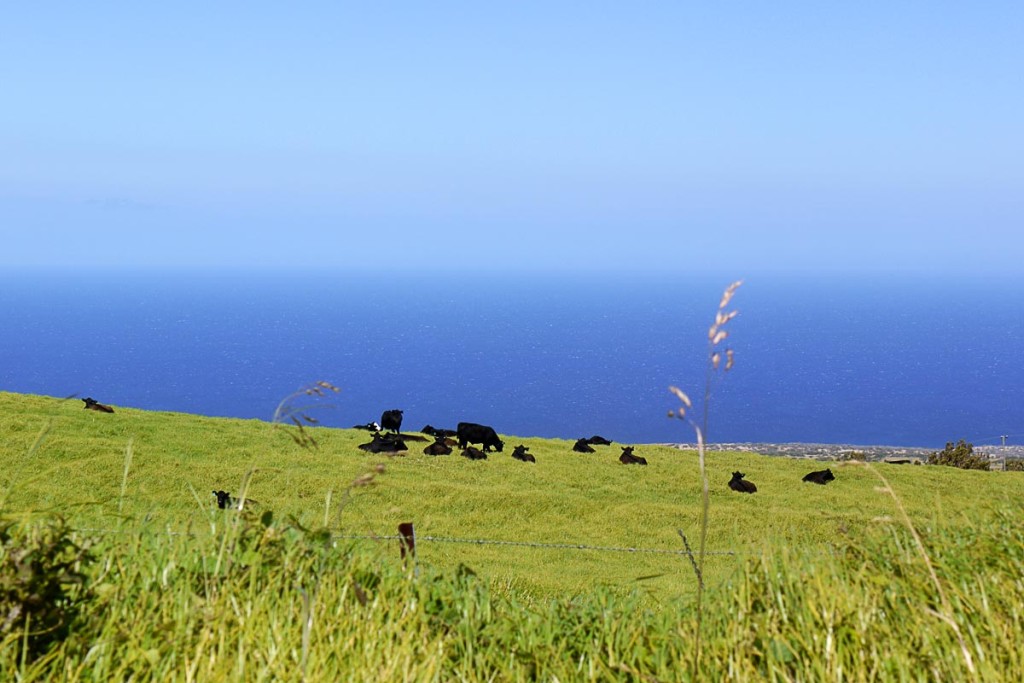
Occasionally we’d pass another group, either on horseback or in a trolley. It was kind of touristy, but in a good way. One guide confided to me that the horses were really bored by this slow walking around, so she took them out riding faster on their days off so the animals could get it out of their systems.
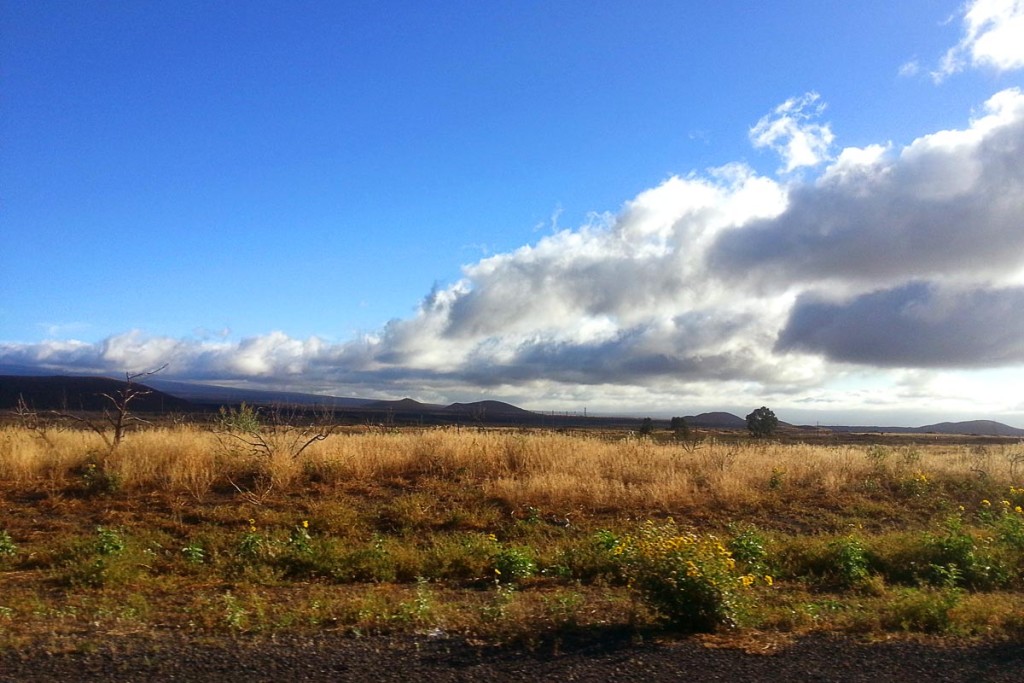
The stars and planets on Mauna Kea
On our last night in Hawaii, we went up as far as we could on Mauna Kea, Hawaii’s highest point that is also, when measured from its ocean-floor base, much taller than Mount Everest. There are several observatories on its summit, where it sometimes snows. It’s one of the best spots on Earth for telescopes since there isn’t much light pollution and the air is so clear above the clouds.
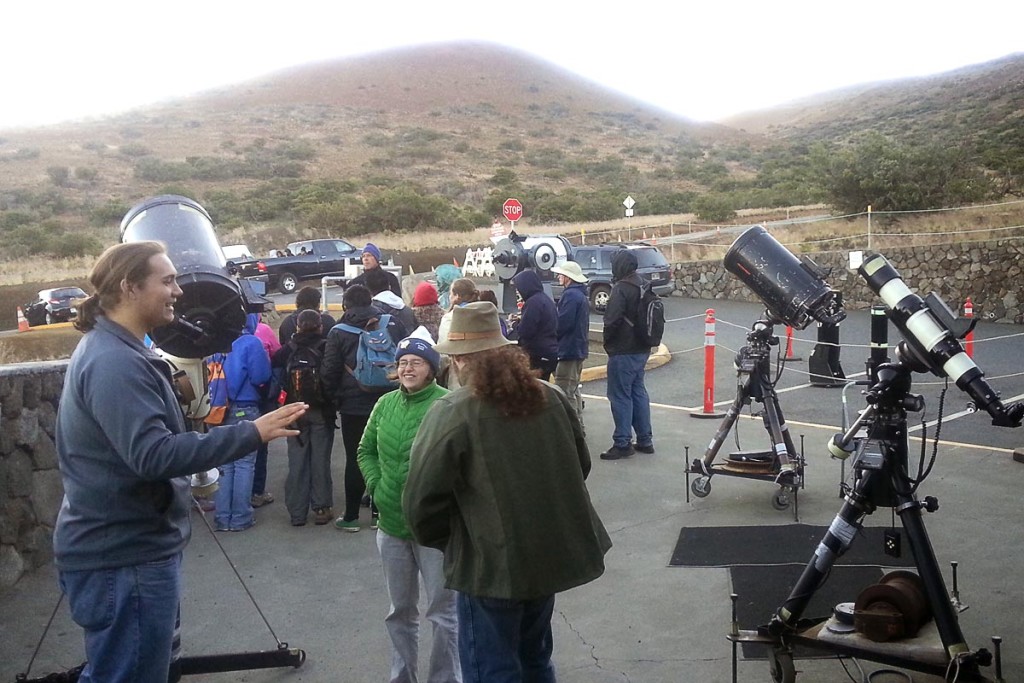
We were only able to go about halfway up to the Visitors Center, since from that point the tricky road requires 4-wheel drive and we weren’t feeling adventurous with our little rental car.
And it was cold. We each had a sweater on but I was still shivering. They gave out hot tea and coffee, but I just kept drinking straight hot water.
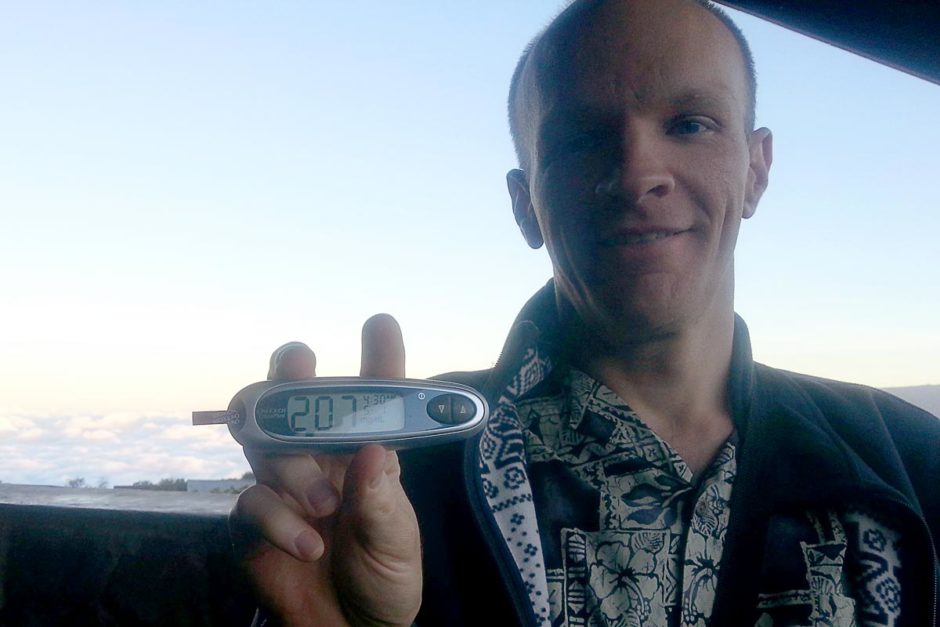
BG 207 before stargazing. Cold and high, that’s no way to be. Gotta be especially careful with food when you travel.
At the Mauna Kea Visitors Center, volunteers bring telescopes each night for visitors to peer through for free. Students and enthusiasts point various telescopes at different sights and people queue up. I saw the planet Saturn through one — yes, the real Saturn. Live, not a photograph! I looked right at Saturn, floating around the solar system. I couldn’t believe it. Just as the internet is no replacement for travel, photographs are no replacement for a good telescope.
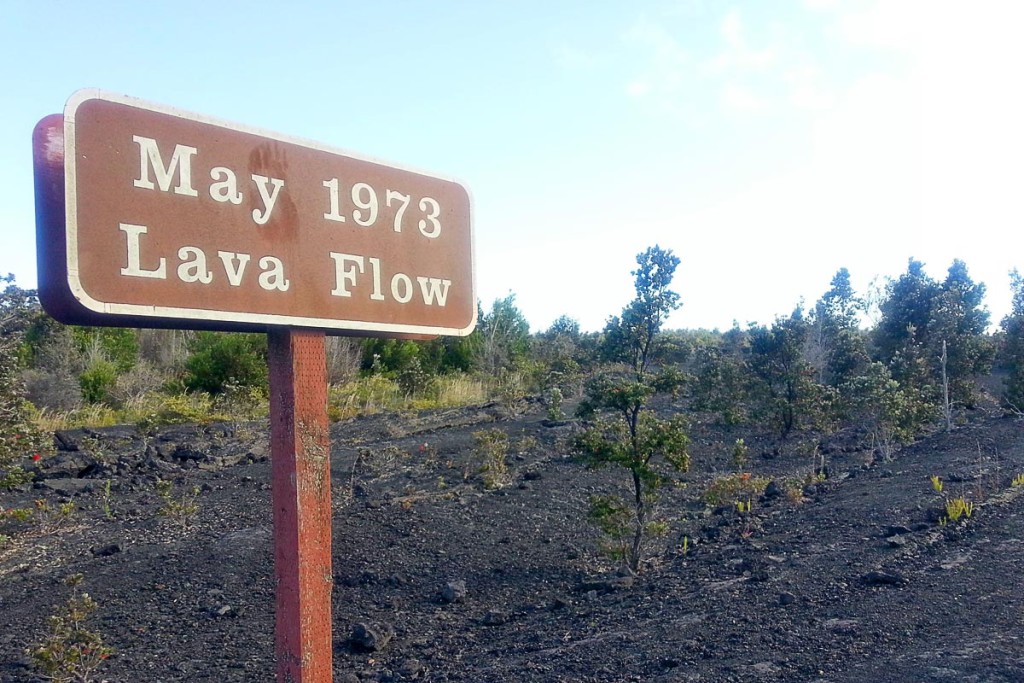
Closing thoughts
After that, our trip to Hawaii was over. We flew back to Honolulu the next day, and then back to Osaka. A short burst of constant fun, over in a flash. I was glad to have done it, but sorry to see it end.
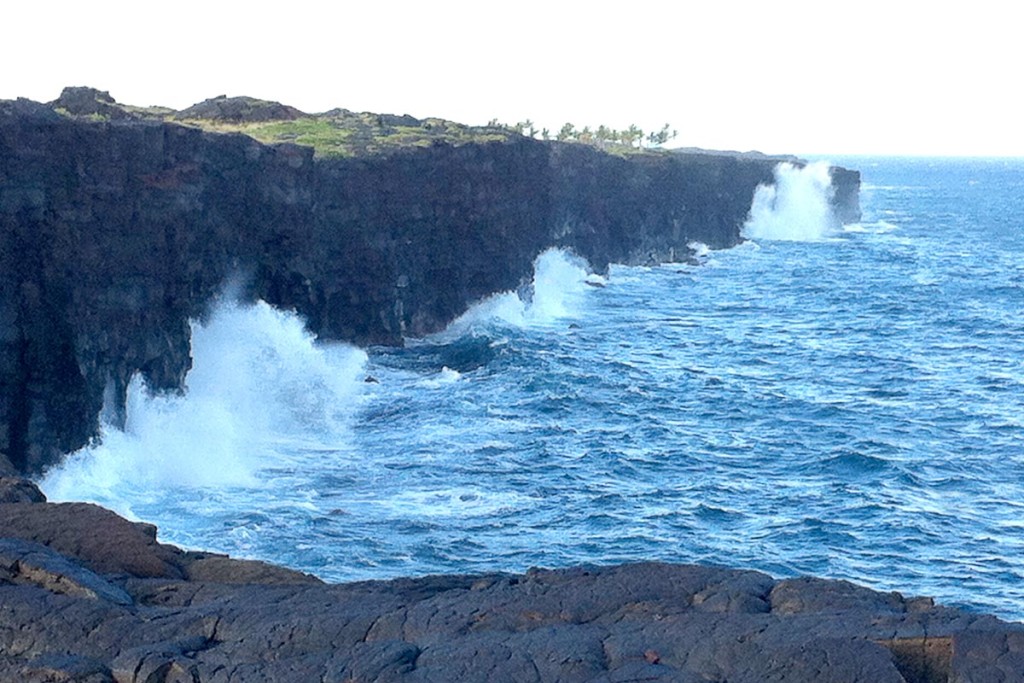
Hawaii was much different than I’d imagined it would be — my memory is one of hard black lava on the ground; dense, wet jungle; a secret valley with both wild and domesticated horses; and a cold mountain above the clouds where you can see stars and planets overhead.
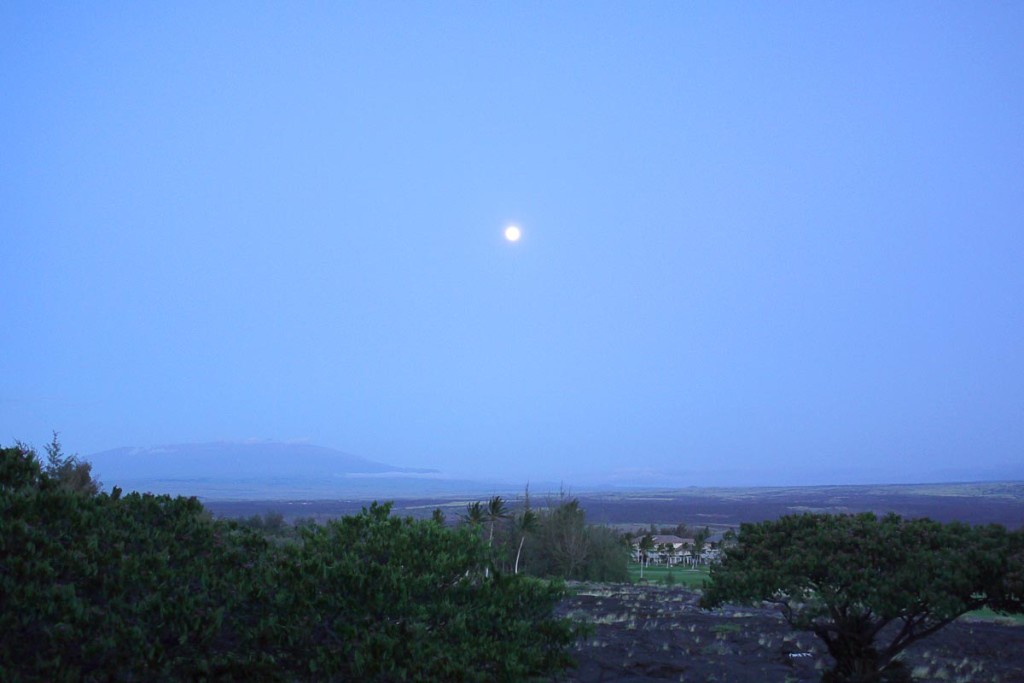
I am glad that Hawaii proved to be more than sunscreen, beach resorts, flip-flops, and overpriced seafood. It was wild and crazy, wet and mysterious, rugged and misty.
And it was only by going there myself that I was able to really feel it.
What place has surprised you when you visited, despite what you learned about it beforehand?
Thanks for reading. Suggested:
- Share:
- Read: Ray Charles road trip in Florida and Georgia
- Join: Free email newsletter (info and early video access)
- Support: Patreon (much earlier video access and other perks)
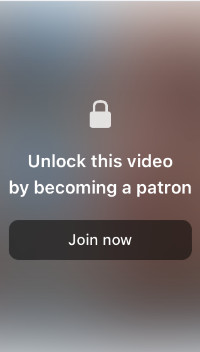
Support independent travel content
You can support my work via Patreon. Get early links to new videos, shout-outs in my videos, and other perks for as little as $1/month.
Your support helps me make more videos and bring you travels from interesting and lesser-known places. Join us! See details, perks, and support tiers at patreon.com/t1dwanderer. Thanks!
Want more? Get the free newsletter
Join us! Sign up to my email newsletter to receive updates, behind-the-scenes info,
and early links to my new YouTube videos before everyone else
